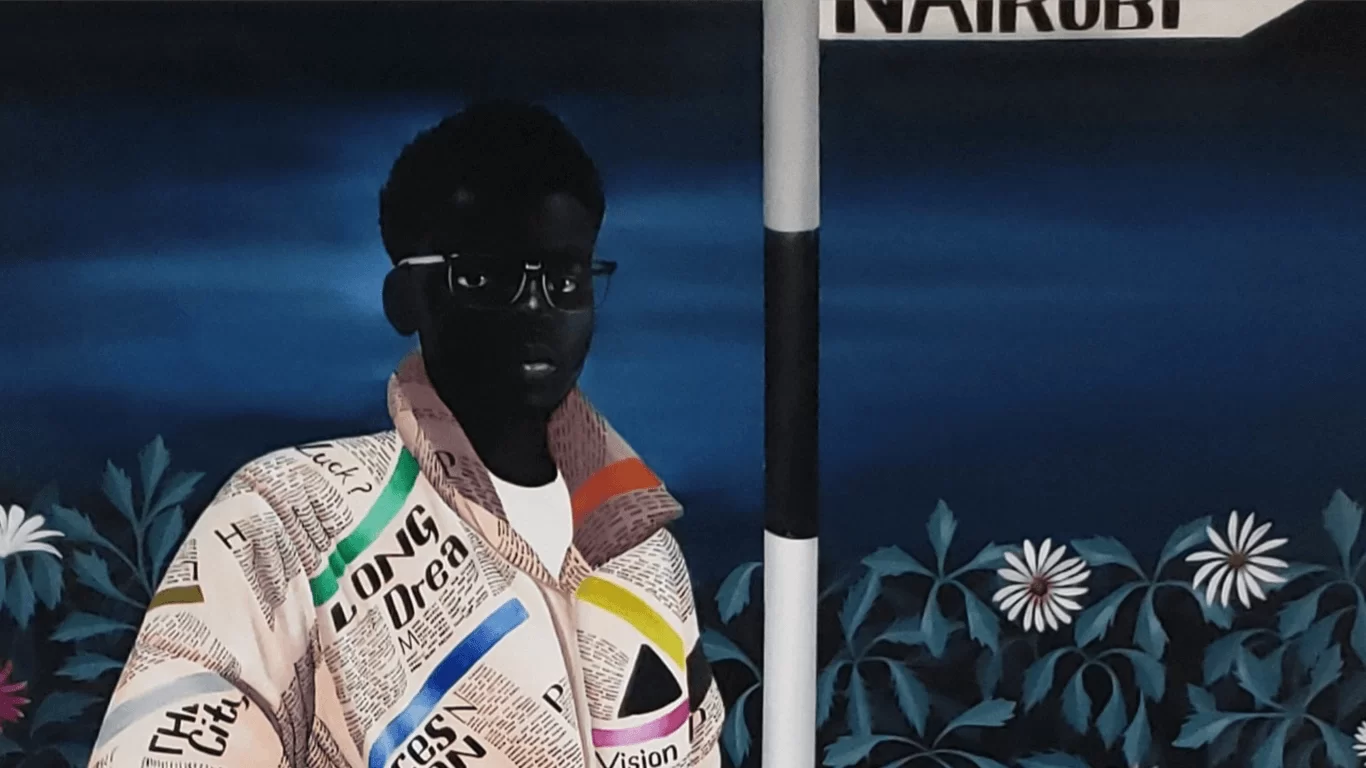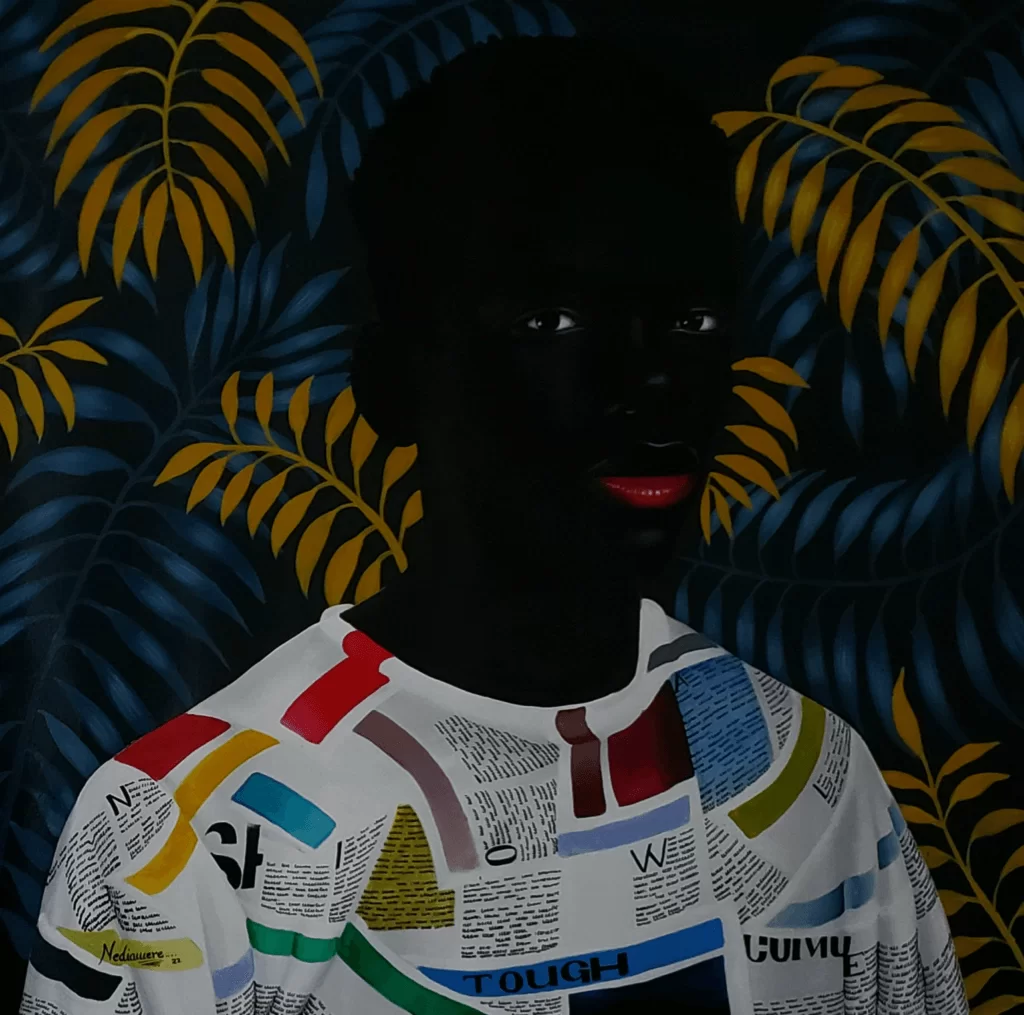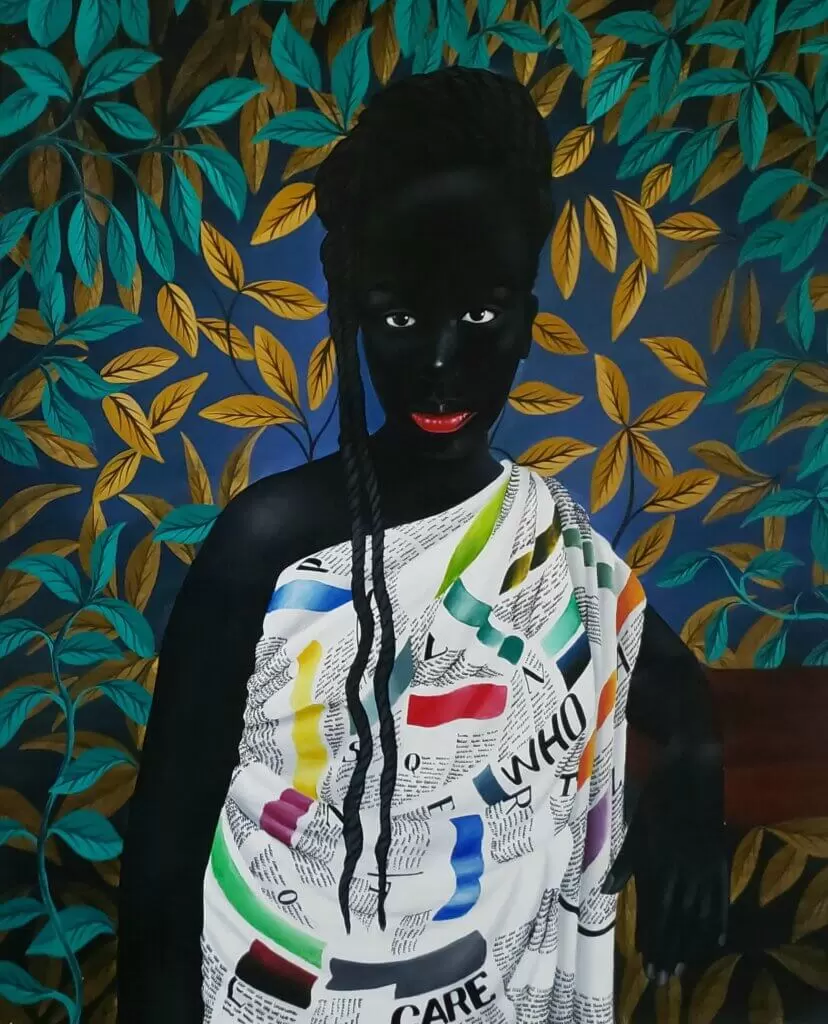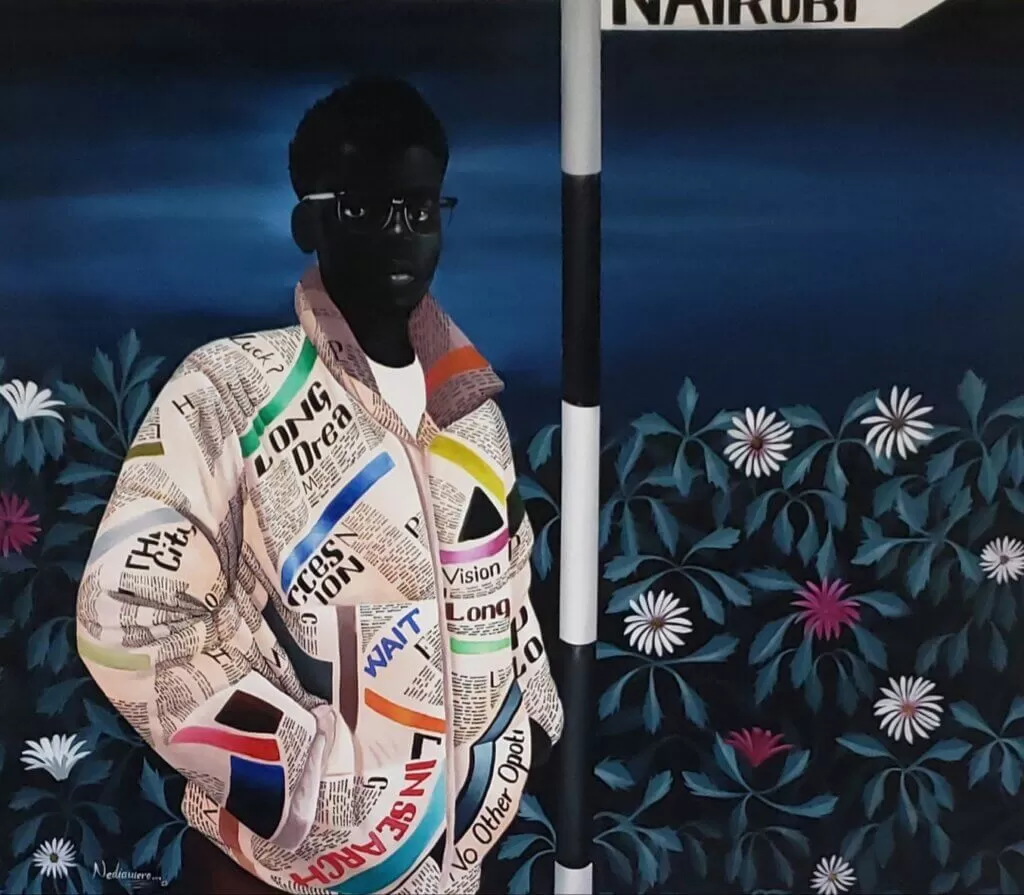Nedia Were’s paintings challenge the status quo on the media’s role in creating perceptions that negatively depict Africans. Nedia is a contemporary painter from Kenya. He currently resides in the capital city of Nairobi. He has been on the rise since his international exhibition debut at Mitochondria gallery in Houston, Texas. Nedia’s exhibition schedule has been filled with art fairs and group exhibitions across the globe. He is coming off five straight sold-out group shows/fairs.
I have a divine belief in art and its co-existence with us. Art making is my way of understanding myself and the world around me
Nedia Were
Were has been experimenting and fine-tuning his practice with over 25 group exhibitions under his belt since 2015. Were is also getting institutional recognition as he participated in his first international Museum exhibition at the Wall House Museum, St Barts, with museum interests arising in Europe and Asia.
Catching up with Nedia to talk about his practice and his anticipated debut solo exhibition “Fragments of Perceptions” at Mitochondria gallery, which opened on May 6th, 2022, was imperative.
Q: How long have you been an artist? How did you get started?
Nedia Were: I believe that I was chosen to be an artist when I was still in my mother’s womb, but my desire to create work started during my early childhood. As I can recall, I used to create toy cars for other kids. At one point, I made a doll for my younger sister. As the years passed, I explored cartoon drawings and copied figures from comic books. In my teenage years, I started doing sign writing for businesses, and from there, I fell in love with words and different fonts. This journey influenced my current work greatly, and it has remained one of my ways of expression and creating a connection with the viewer(s).
Q: Why do you create art and what keeps you motivated to do so?
Nedia Were: I have a divine belief in art and its co-existence with us. Art making is my way of understanding myself and the world around me. In this era of repetitive violence, destruction, prevalent ideologies, disenfranchisement of individuals in our society, colourism, and the ironic role of the media, I feel helpless watching this happen. I turn to my art and try to make sense of my feelings. I am deeply motivated by how my audience reacts when they see my work in person, which makes me continue doing it.
Q: How did you develop your style of art?
Nedia Were: I have always been an experimental artist, experimenting with different things such as composition, texture, and many more. I believe experimentation helps an artist to grow. My current style is a combination of years of experiments that I have done. I was able to use words, letters, and colours to create a newspaper print. I am very much comfortable with newspaper print because it gets my message out direct and clear.
Q: You have spoken before about your intentions of being a conversation starter, storyteller and the impact images have on the perception of society and culture. Why is this important to you?
Nedia Were: The ideas that we have about other people simply started with a perception. For example, the ideas surrounding people of colour started with just a perception from one person, and then it spread. Then the image creators of that time used this imagery to actualize the ideas that were created as a result of perception.
The writers and storytellers came in and started talking about these ideas. I want to use the same perceptions to create ideas and new meanings in my work. These ideas allow me to create images that will change the perceptions that have been in existence. I want to tell good and inspiring stories. I want to question the narratives that have been told. In my stories as an artist, it’s not about us versus them. It is about us as human beings.
Q: In your debut solo exhibition with Mitochondria Gallery in Houston, Texas, which opened on May 6th, 2022, you titled the show “fragments of perceptions”. Why did you decide to present a body of work that is untitled?
Nedia Were: In this exhibition, “fragments of perceptions,” I invite my viewers to come and finish the painting process by naming each piece as they see it. I want the audience to form their own perceptions and create their own ideas according to what they see. I didn’t want to influence their perceptions and ideas with my mine.
Q: A common occurrence across all works in your solo exhibition is your use of newspaper print in every work, which is hand-painted. There are a couple of works from your solo show that have been widely shared on social media, such as Untitled I, III, IV, V, and VI. Why do you think the public has connected with them?
Nedia Were: The newspaper painting is a metaphorical representation of the ironic role of the media in our society today. There is a lot of propaganda going around, and it’s somehow hard for one to distinguish between fake and truth. My audience can connect with the work because they can relate to what I am talking about.
Q: What would you say are the biggest hurdles in overcoming the negative portrayal of black people in Africa and the diaspora in the media?
Nedia Were: The biggest hurdle is that most of the mainstream media houses are not owned by black people. When you come to Africa, the media house primarily focused on ideas that sell, for example, politics. Therefore, misrepresentation will always be there due to different interests that the media houses have.
Q: Glancing through the headlines in your newspaper print, I was able to pull out a few words, such as Flower in “Untitled VI” and Tough in “Untitled V”. Some paintings had multiple words legible such as “Untitled III”, where vision, dream, wait, no other option, and luck can be seen on the jacket of the subject. In others, such as “Untitled I”, “Untitled II”, and “Untitled XI”, there are no legible words. How did you decide what words to make legible and how do they contribute to the narrative in the work?
Nedia Were: Sometimes I am overwhelmed and can only speak through my work; this is where the newspaper print comes into play. The readable words are part of the story that has inspired the work. I use this technique, so my viewers can pick up hints and connect with the work even when I’m not there.
Q: The lady in “Untitled VIII” is not represented in clothing with newspaper print. Instead, the newspaper print is on the tablecloth. A mysterious shadow in the room is cast by a figure away from the scene. The only legible word on the tablecloth newspaper print is “soon”. What is the story behind this work?
Nedia Were: In this work, I talk about something present but disappearing. The best way to do so was to create a shadow of someone either entering the house or going out, this is up to the viewers. I also wanted to bring in the idea of visibility and invisibility. However, the shadow in this work represents someone familiar to the subject/muse; the story of a trooper going on a mission or coming back was so real to the muse. This was the best way I thought of bringing it out.
©2022 Nedia Were, Mitochondria gallery









